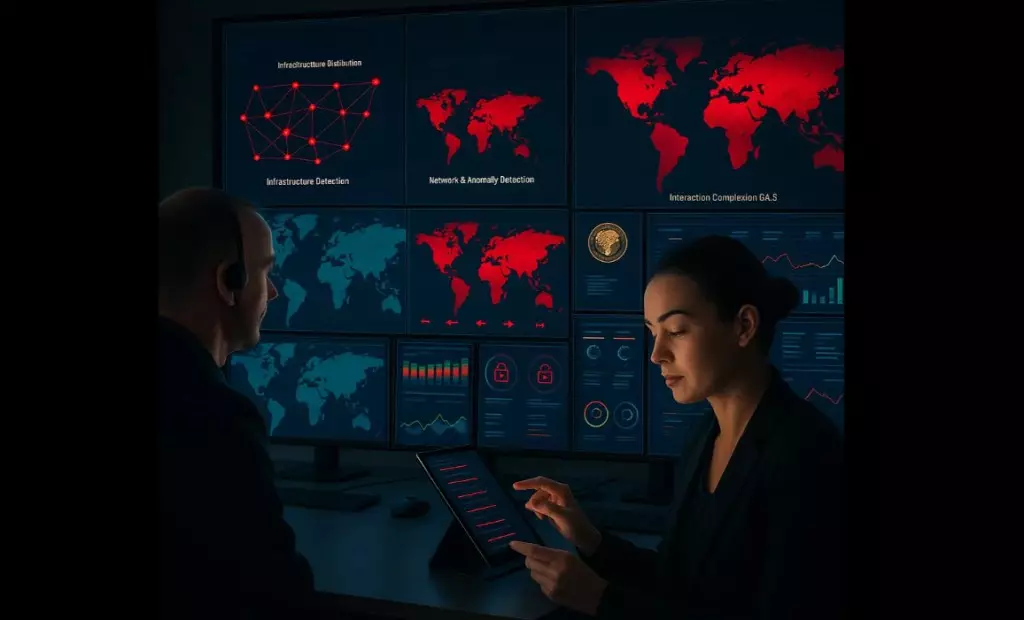The recent dismantling of DanaBot, a sophisticated malware ecosystem primarily operated out of Russia, serves as a powerful testament to the transformative potential of agentic artificial intelligence (AI) in cybersecurity operations. Over an extensive period, DanaBot compromised more than 300,000 systems globally, causing economic harm estimated at over $50 million, thus exposing vulnerabilities in the digital infrastructure across numerous countries. The U.S. Department of Justice has recently indicted 16 individuals linked to this nefarious operation, which had evolved from malware targeted at financial institutions to a multifaceted tool for cybercrime, including ransomware attacks and espionage efforts. This dramatic evolution underscores one fundamental truth: the landscape of cybersecurity is in constant flux, driven by the ingenuity of both cybercriminals and innovators in technology.
The Evolving Threat Landscape
Emerging initially in 2018 as a banking trojan, DanaBot navigated rapidly from its original purpose to a versatile cybercrime toolkit. It was adept at executing not only fraud schemes but also sophisticated attacks on critical infrastructure. With connections to Russian state-sponsored activities, DanaBot blurred the lines between independent cybercrime and systematic espionage, revealing a concerning trend where financial motives intertwine with geopolitical interests. The complexity of DanaBot’s operations, including its extensive network of command-and-control (C2) servers and the staggering number of daily victims, illustrates a high level of organization and intent that necessitates a new approach to cybersecurity.
Given its operational sophistication, the DanaBot platform illustrates a significant gap in traditional defense mechanisms. The use of dynamic and modular architectures allowed it to adapt swiftly, overwhelming older static defenses that cybersecurity teams have relied on for years. As security analysts grappled with the malware’s evolving nature, the need for smarter, more agile responses became clear.
The Role of Agentic AI
The subsequent takedown of DanaBot showcases the profound impact of agentic AI in cyber defense. This technology’s capacity to analyze vast amounts of data in real time significantly enhances the ability to mitigate threats. For cybersecurity operations centers (SOCs), agentic AI minimizes manual task burdens—transforming weeks of forensic analysis into mere days. Its predictive threat modeling, autonomous anomaly detection, and real-time telemetry correlation offer SOC teams the tools necessary to engage with threats proactively rather than reactively.
Analysts often contend with excessive false positives, a consideration that agentic AI specifically addresses. Legacy systems afflicted by outdated approaches generate substantial alert fatigue—rendering analysts weary and less effective. In contrast, newer systems employing agentic AI streamline operations through contextual awareness and efficient prioritization, thus allowing human intelligence to focus on high-impact threats that require nuanced understanding and response.
Operationalizing AI Innovations
To fully realize the capabilities of agentic AI, organizations must adopt conscious strategies when integrating these technologies into their workflows. High-performing SOCs prioritize the automation of repetitive, high-volume tasks—focusing on initial successes that produce measurable ROI. This strategic scaling not only addresses labor inefficiencies but also repositions analysts to tackle complex and evolving threats.
Moreover, ensuring that telemetry becomes an integral foundation rather than an afterthought is crucial for maximizing the benefit of AI. By unifying signals gathered from various sources—such as endpoints and networks—enterprises can provide AI systems with richer contextual data, fostering more informed decision-making processes.
Establishing Governance and Accountability
As agentic AI systems take on greater responsibility for decision-making, the importance of establishing governance structures cannot be overstated. The most effective teams are crafting clear protocols governing engagement rules, escalation pathways, and audit trails to ensure accountability. In this regard, human oversight evolves from being a mere safety net into an essential component of the control framework, enabling trust in automated procedures.
Crucially, aligning AI initiatives with meaningful metrics establishes not just operational effectiveness but also strategic value beyond the confines of the SOC. By honing in on key performance indicators like decreased false positive rates and reduced mean time to respond (MTTR), security teams can better demonstrate their operational leverage, fostering broad organizational support.
Innovation in Adversarial Response
As cyber adversaries evolve to exploit new vulnerabilities and shortcuts in security, an infusion of agentic AI into cybersecurity frameworks provides a crucial edge. The DanaBot incident serves as an illustrative case of how aligning advanced technology with strategic cybersecurity efforts can turn the tide in favor of defenders rather than attackers. It is no longer merely about building layers of defense, but rather about creating a responsive and resilient environment capable of adapting and countering attacks that evolve at machine speed.
In a digital age marked by relentless threats and escalating creativity from malicious actors, organizations who embrace the agility and sharpness of agentic AI are better positioned to thwart adversaries effectively. The war against cybercrime is undoubtedly complex, but fortifying defenses with advanced technologies offers a future filled with promise and potential for the cybersecurity landscape.

